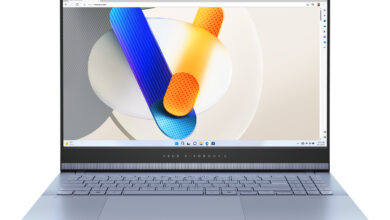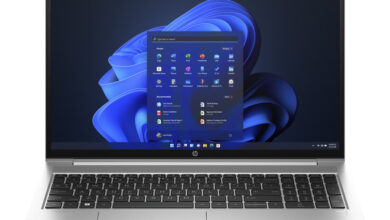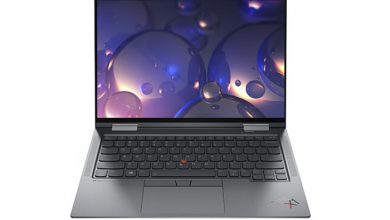In the market, there are a lot of laptops with OLED screens. With OLED, laptops can now achieve a vibrant color and an accurate display experience. However, the question is whether your laptop needs an OLED screen or not.
Here, we discuss some of the advantages and disadvantages of OLED screens, and based on these, we will conclude whether a laptop needs an OLED screen or not.
Advantages of OLED Screen
There is no doubt that OLED screens are far superior to LCD screens in terms of color gamut and accuracy range. Typically, it has an sRGB color gamut of over 100%, an average color accuracy ΔE of 1, and a low level of color deviation. Not only that, but in addition to HDR, OLED screens also support high brightness. Its response time becomes very fast.
Disadvantages of OLED Screen
Due to some characteristics of OLED, we must admit that this screen type is not perfect. It uses a polarized screen technology that performs well in normal environments but extremely poorly in challenging conditions.
The first is the burn-in issue, which is the most common problem with OLED screens. Even with the latest Samsung E4 Material, this issue still happens, but it’s not serious. There is a limit to the lifespan of OLED screen pixels, which is determined by their physical characteristics and cannot be changed. Advances in technology can only help extend the life of displays, but they still can’t reduce the annoying factor of OLEDs. Therefore, it does not matter if the picture quality is better or not; the lifespan of the screen is still limited.
Another common problem with OLED screens is that they cause eye strain. As we all know, OLED screens have higher brightness and a wider color gamut, so the display will be great. However, at the same time, if there is a large amount of color information in the monitor, then prolonged use can cause eye fatigue, which may lead to headaches. If you are a sensitive user, you may feel dizzy and sore eyes after watching it for a long time.
Thirdly, we have another major problem with OLED screens: higher power consumption. OLED screens compromise the battery life of laptops by delivering high image quality.
It’s also worth noting that color management itself is a problem with the Windows system. If the manufacturer does not do anything by itself, it can easily lead to color aberration.
Physical Discomfort is the Main Issue
Even if OLED displays have the above issues, they can still be solved. For example, if an OLED display has burn-in issues. To avoid this problem, ASUS has introduced a program in its OLED-equipped laptops that forces the display into dynamic picture mode. The main reason for OLED Screen Burn-in is displaying the same picture for a long time, such as the taskbar at the bottom of Windows, which has almost no motion. Opening a static web page for a long time is another reason that can cause screen burn-in.
Another mentioned issue is battery life, which is easy to deal with. Reducing brightness during daily use or using common energy-saving options can help extend your battery life.
Although color management for Windows is complex to solve, the problems rarely occur, so there’s no need to worry too much about this issue.
Of course, the screen burn-in can be alleviated by technical means. However, if the screen is being used carefully and correctly, there is a low probability of screen burn-in issues in a laptop’s expected life cycle.
All the issues we have discussed about OLED displays have a specific solution in a certain way. However, the most lethal fact of this type of display is that it can easily cause physical discomfort to the user. As OLED displays become more widely used in laptops, many consumers have reported this issue. Physical discomfort includes eye discomfort, headaches, eye strain, and many other issues with long-term use. Undoubtedly, this is the biggest problem in OLED displays.
Do laptops need OLED screens?
Back to our main query regarding whether OLED screens must be used in a notebook or not. In our opinion, using an OLED display in a notebook is completely unnecessary. The following are some reasons that make our opinion more valid.
There is no doubt that the OLED display will provide a better picture experience, but at the same time, it will also cause user fatigue and significantly impact their working state.
The most significant advantage of OLED screens is HDR support. However, in the case of notebooks, the HDR is useless as most video players, streaming websites, and related programs don’t support HDR. The laptop’s display supports higher resolution (4K), but it doesn’t support HDR.
The price of laptops with OLED screens is relatively high, which is why we recommend that you experience it before buying, so that you can determine if your eyes and brain can withstand the pressure of an OLED display. Using an OLED screen may be similar to using a VR device. Some people can use it for a few hours, but others may not last a few minutes.





